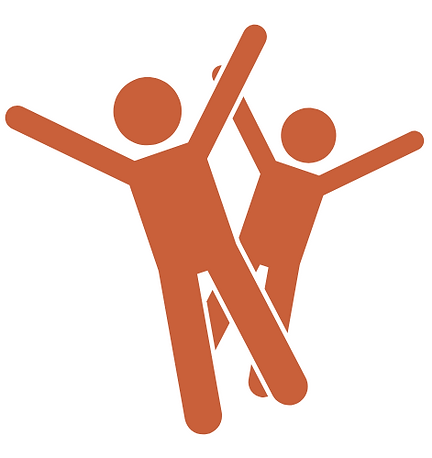
Dialectical Behavior Therapy for Adolescents
Acceptance and change toward your life worth living
What is DBT-A?
DBT is a type of CBT, meaning we’ll look at how your thoughts and behaviors are impacting how you feel. DBT adds the nuance of dialectics, the concept that two things that seem opposite can both be true.
Some common dialectics are “therapy is helpful AND it’s hard work”, “I want to do well in school AND it can be hard to focus”, “I am a wonderful parent AND I make mistakes”.
The main dialectic in DBT is acceptance and change:
“I accept myself exactly as I am AND I am working toward change.”
.png)
DBT-A is very similar to DBT – just adapted for teens:
-
It has one more module than typical in DBT skills group that addresses family conflict.
-
At least one parent joins the group as a full participant, and all family members are invited to come as often as they can, if the teen agrees.
-
Phone coaching is only for the teen.
-
Family and parent sessions are added as appropriate.
Who is DBT-A for?
Your teen might be struggling with things like
- Feeling like they're on an emotional roller coaster
- Fighting with loved ones
- Feeling numbed out, empty or disconnected
- Not having a sense of self
Your teen might even have turned to things like
- Reckless driving
- Self-harm
- Unhealthy eating patterns
- Thinking about suicide
- Threatening suicide
If your teen is experiencing any of the above symptoms, for any reason, we can help.
The common thread for people who benefit from DBT is emotion dysregulation. Emotion regulation is when we are managing, controlling, and influencing our emotions. Emotion dysregulation is the opposite.
A note about borderline personality disorder:
BPD is the most treatable personality disorder. BPD unfortunately doesn’t have the best reputation; DBT is a treatment that works in treating BPD.
However, lots of people who benefit from DBT do not have BPD.
Why was DBT created? What purpose does it fill?
Marsha Linehan, PhD, the developer of DBT, wanted to create a treatment that would actually work for clients who weren’t getting better.
She initially tried behavior therapy, and clients pushed back, saying “you don’t understand how hard it is, how much pain we’re in.”
Then she tried a person-centered, humanistic approach, and still received pushback: “it’s nice to feel validated, and we have real problems and need real help!”
This led to the development of a third set of strategies: dialectical strategies. With the combination of acceptance and change, clients were able to get movement and flow in sessions, and actually reach their life worth living.
What are the parts of DBT that make it work?
Each of the 4 components, or modes, of the treatment directly map onto the problems people come to DBT with.
.png)
Group is where you and your teen will learn skills to become more mindful, improve interpersonal effectiveness, tolerate distress, and learn to manage and control emotions.
.png)
Phone coaching moves your teen from skills in their head to skills in their life. It also gives them a chance to learn to observe, communicate, and respect limits in relationships.
.png)
Individual DBT helps your teen recognize patterns that get them stuck and figure out ways to move forward.
.png)
DBT team makes sure your teen's therapist doesn’t burn out and does a great job at doing DBT with your teen.
A note about doing only “part” of DBT
Without all 4 modes, it is NOT comprehensive DBT.
Many times people think they have “done DBT” and have only received one part. This would be called DBT-informed treatment, or therapy that is informed by aspects of DBT.
For people who need full DBT it’s vital that it be done according to the way it was developed and tested because that’s the way we know that it works!
Recent research shows that many people can benefit from DBT skills group alone. This is a decision that is made together with your individual therapist and is not appropriate for everyone.
